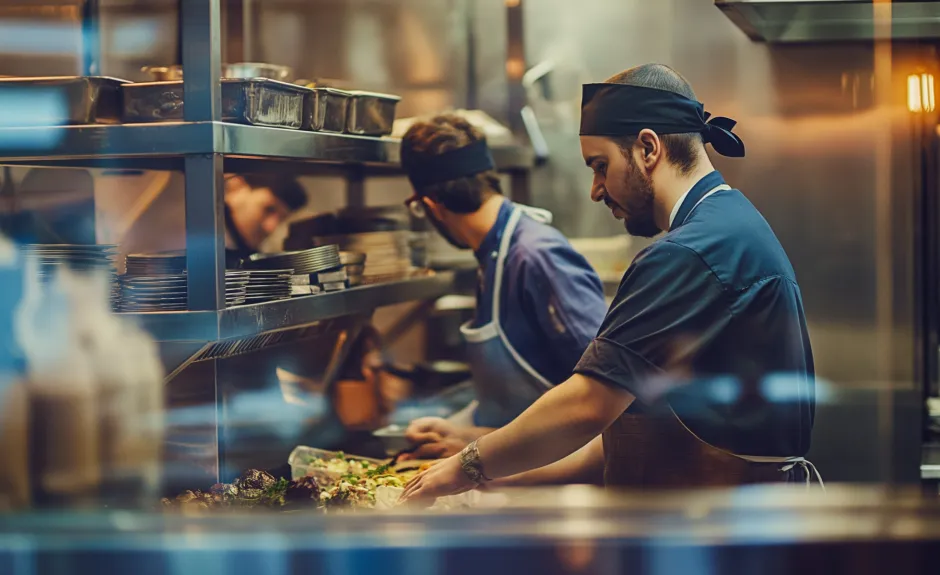10 ways to optimise a quick service restaurant for speed and profitability
In today’s competitive hospitality industry, quick service restaurants (QSRs) must operate with razor-sharp efficiency to maximise speed, profitability, and customer satisfaction. Whether it’s streamlining operations, adopting cutting-edge technology, or optimising staffing, QSR owners in the UK and Ireland have ample opportunities to grow their bottom line while meeting customer expectations for fast, seamless service.
Here are 10 actionable strategies to optimise your QSR for success:

1. Implement Advanced POS Systems
Investing in an advanced POS for restaurants can transform how orders are placed, processed, and delivered. An all-in-one POS system integrates payments, inventory management, and reporting, reducing manual errors and boosting efficiency.
“Modern POS solutions streamline operations by improving order accuracy and reducing processing times, which is critical in QSR environments,” says John Kelly, a senior adviser at the British Hospitality Association.
Key Benefits:
Faster order processing reduces wait times
Real-time inventory tracking prevents stockouts
Integrated reporting enables better decision-making
2. Introduce Self-Serve Kiosks
Self-serve kiosks empower customers to place their own orders, speeding up service during peak times while reducing staffing requirements. Kiosks enhance accuracy and enable upselling by suggesting meal add-ons or combos.
Why it works: According to hospitality industry studies, kiosks can reduce customer wait times by up to 40%, leading to increased satisfaction and higher average spend per order.
“Adopting kiosks can be a game-changer for QSRs, enabling a smoother experience for both staff and customers,” notes UK hospitality consultant Sarah Mitchell.
3. Optimise Your Kitchen Workflow
Efficiency in the kitchen directly impacts service speed. Consider reworking your kitchen layout to ensure a smoother flow from preparation to delivery.
Tips for improvement:
Adopt a streamlined assembly line process for popular menu items.
Use kitchen display systems (KDS) to digitise order communication.
Divide tasks based on peak periods to maximise productivity.
4. Leverage Online Ordering Systems
Online ordering for takeaways not only increases convenience for customers but also helps your QSR manage high-volume orders more efficiently. Ensure your online platform integrates seamlessly with your POS system to streamline order processing.
What to aim for:
A clear, user-friendly online ordering interface
Real-time updates on order status
Easy payment options to reduce friction
5. Reduce Labour Costs with Smarter Scheduling
Labour costs are a significant expense for QSRs. Use scheduling software to align staffing levels with demand and ensure you’re adequately covered without overstaffing.
The UK Government’s recent labour market analysis highlights how technology-driven scheduling can reduce costs by up to 20% while improving staff satisfaction.
Actionable Steps:
Monitor sales data to predict peak hours.
Cross-train staff to handle multiple roles during busy periods.
Use labour management tools to reduce unnecessary overtime.
6. Focus on Drive-Thru Efficiency
For QSRs with drive-thru services, optimising throughput can significantly impact profitability. Implement dual lanes or digital menu boards to increase order-taking speed.
Proven methods to improve drive-thru efficiency:
Install pre-payment options at multiple points.
Use headset systems to minimise communication delays.
Monitor and refine drive-thru times with regular staff training.
7. Enhance Menu Design and Simplify Choices
A streamlined menu helps customers decide faster and ensures quicker preparation times for your team.
What to optimise:
Highlight high-margin items and popular combos.
Simplify your offerings by removing slow-moving or complex items.
Implement seasonal specials to keep the menu fresh and manageable.
8. Adopt Delivery and Takeaway Optimisation
Takeaway and delivery orders are a key revenue stream for QSRs. Optimising this segment ensures customers receive their food quickly while maintaining quality.
Steps to enhance takeaway operations:
Implement branded packaging to keep food fresh and visually appealing.
Designate a dedicated pickup area for delivery drivers and customers.
Use technology to optimise delivery zones and reduce delays.
9. Use Data Analytics to Make Informed Decisions
Your QSR generates vast amounts of data that can guide operational improvements. Advanced POS systems, online ordering tools, and analytics platforms provide insights into performance metrics like average ticket size, peak hours, and customer preferences.
“Data-driven decisions are key to sustaining profitability in quick-service settings,” says Fiona Lewis, a hospitality data strategist in Ireland.
KPIs to track:
Order preparation time
Average transaction value (ATV)
Staff productivity levels
10. Focus on Staff Training and Retention
Well-trained, motivated staff are crucial for maintaining speed and quality. Implement regular training sessions to familiarise staff with new technologies and efficient workflows.
Ideas for effective staff management:
Conduct monthly training on using POS and self-serve kiosks efficiently.
Recognise top performers with incentives to boost morale.
Create clear roles and responsibilities to prevent bottlenecks during service.
The UK Government’s Skills for Jobs programme emphasises the importance of upskilling staff to meet the evolving needs of hospitality businesses.
The Bottom Line: Faster Service, Greater Profit
By implementing these strategies, experienced restaurant owners can optimise their QSR operations for speed, efficiency, and profitability. From leveraging advanced POS systems for restaurants to integrating self-serve kiosks and improving kitchen workflows, every step contributes to a more streamlined operation and enhanced customer satisfaction.
To remain competitive, focus on reducing costs, improving service times, and embracing innovative solutions. As the QSR landscape evolves in 2025, staying agile and data-driven will be the key to sustained success.


